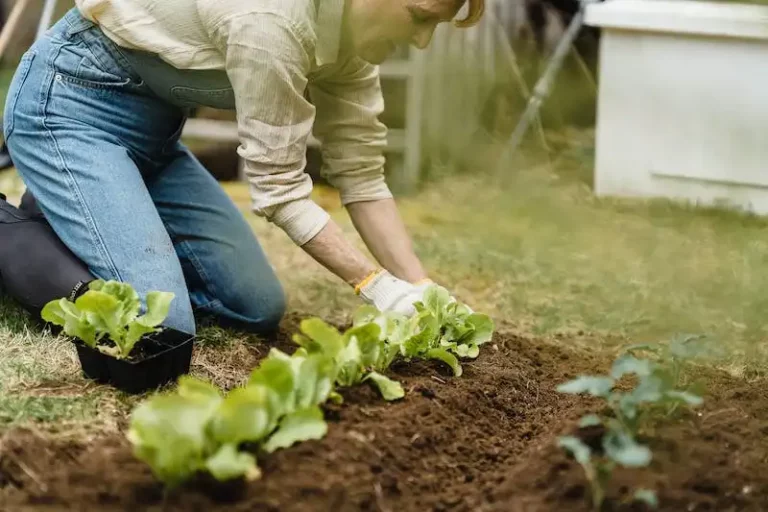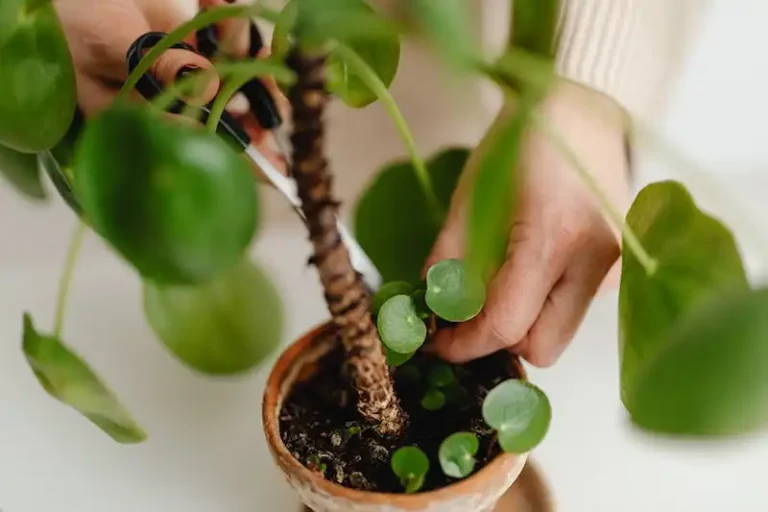According to the shores of Norfolk Island, Norfolk Island Pine is a popular houseplant that brings a touch of the tropical indoors. While it may present some challenges to care for, these can easily be solved by identifying and meeting its specific needs. For those who are nurturing their first houseplants or looking to add a touch of green to their living space, Norfolk Island Pine can be an ideal choice.
In the family of Araucariaceae, Norfolk Island Pine is a true tropical plant that often reaches taller heights. It thrives in bright and well-lit environments. The plant can also handle lower light conditions, but it may require some additional care. Watering is an essential aspect of its care, and it is important to ensure that the plant is adequately watered. However, overwatering can cause the roots to rot, so finding the right balance is crucial.
Fertilizing Norfolk Island Pine is also important, but it does not require fertilization as frequently as other houseplants. It is recommended to fertilize the plant every three to four months, using a standard houseplant fertilizer. During the holiday season and springtime, it may benefit from a bit more fertilizer.
If you are interested in growing Norfolk Island Pine, here are some tips to keep in mind:
- Place the plant in a bright location, preferably near a window.
- Water the plant enough to keep the soil moist, but not waterlogged.
- Fertilize the plant every three to four months with a standard houseplant fertilizer.
- Provide the plant with a humid environment, especially during the dry winter months.
- Protect the plant from cold drafts and extreme temperatures.
By following these tips, you can enjoy the beauty and charm of Norfolk Island Pine in your own home. Its unique tropical appearance and low-maintenance nature make it a wonderful addition to any indoor garden. So go ahead and give this beautiful plant a try!
How to Care for Norfolk Pine, a Popular Indoor Tree
The Norfolk Island Pine, also known as the Araucariaceae tree, is a popular evergreen tree that is commonly found in coastal and tropical areas. It is often grown as a houseplant in homes, adding a touch of elegance to any indoor space. Caring for a Norfolk Pine comes with its challenges, but with the right conditions and care, you can help it thrive in your home.
One of the key characteristics of Norfolk Pines is their need for plenty of light. They appreciate bright, indirect light and should be placed near a window where they can receive at least six hours of sunlight daily. However, be cautious of placing the tree in direct sunlight, as it can lead to burnt needles and foliage.
In terms of humidity, Norfolk Pines like a humid environment. They are well-suited to coastal conditions and higher humidity levels. To replicate their natural habitat, you can mist the tree’s foliage regularly or place a tray of water near the tree to increase humidity. This will help prevent the tree from drying out and keep it healthy.
When it comes to temperature, Norfolk Pines prefer cooler conditions. They can tolerate temperatures as low as 50°F (10°C) but are ideally kept between 60-70°F (15-21°C). Avoid placing the tree near heat sources such as radiators or vents, as the dry air can cause the tree to suffer.
Fertilizing Norfolk Pines is also important for their overall health and growth. Use a balanced, water-soluble fertilizer specially formulated for indoor plants. Fertilize the tree every month during the growing season (spring and summer) and reduce the frequency to every two months during the dormant season (fall and winter).
Watering Norfolk Pines is a delicate task. They don’t like to be overwatered or underwatered. The soil should be kept moist but not waterlogged. Before watering, check the top inch of soil, and if it feels dry, it’s time to water. Avoid letting the plant sit in standing water, as it can lead to root rot.
Pruning Norfolk Pines is not usually necessary, but you can remove any brown or dead foliage to maintain its appearance. Additionally, you can lightly shape the tree by pinching or trimming the new growth.
In terms of pest control, Norfolk Pines are generally pest-free. However, you should keep an eye out for common indoor plant pests like aphids, spider mites, and mealybugs. If you notice any signs of infestation, treat the plant with an appropriate insecticide according to the product’s instructions.
In summary, caring for Norfolk Pines involves providing them with the right conditions of light, temperature, humidity, and proper watering. With a little care and attention, your Norfolk Pine can thrive indoors and become a beautiful and popular focal point in your home.
Replicate the Norfolk pine’s native conditions
One of the key challenges in caring for a Norfolk Island Pine is to replicate its native habitat as closely as possible. The Norfolk Island Pine is native to the Norfolk Island, a small island located in the South Pacific. The island’s coastal characteristics, including its temperature, humidity, and bright natural light, play a crucial role in the pine’s growth and development.
To best replicate these conditions, it is important to keep the Norfolk pine in a bright, well-lit area of your home. Placing it near a window will allow it to receive the necessary amount of natural light. Additionally, maintaining an ideal temperature range of 60 to 70 degrees Fahrenheit (15 to 21 degrees Celsius) will provide the pine with the environment it thrives in.
Proper watering is also essential. Norfolk pines prefer a slightly humid environment, so it is recommended to mist the plant occasionally or use a humidifier to prevent dryness. Watering the plant thoroughly, allowing excess water to drain out, and then letting the soil dry out slightly between each watering will help maintain the plant’s preferred level of moisture.
Fertilizing the Norfolk pine is important but should be done sparingly. Use a standard houseplant fertilizer according to the label’s instructions. Only fertilize during the spring and summer months, as the plant’s growth is most active during this time. Too much fertilizer can lead to excessive growth and weak, floppy branches.
Recognizing that the Norfolk pine’s natural habitat is vastly different from the conditions found in most homes is key in providing it with the care it needs. By mimicking its native conditions as closely as possible, you can help the Norfolk pine thrive and appreciate its true beauty in your home.
Fertilize your pine to make up for environmental deficiencies
Growing Norfolk Island Pines in your garden can be a rewarding experience. These evergreen plants, which belong to the Araucariaceae family, have become increasingly popular as houseplants and are also ideal for coastal homes due to their characteristics and potential for growth in tropical conditions. However, like any plant, Norfolks have their own environmental needs that must be met in order for them to thrive.
One of the most important aspects of caring for Norfolk Island Pines is recognizing and addressing any deficiencies in their environment. If you notice that the leaves of your pine are turning brown or that the growth rate is slow, it may be a sign that the plant is lacking certain nutrients. In order to solve this problem, it is recommended to fertilize your pine regularly.
When it comes to fertilizing Norfolk Island Pines, there are a few tips to keep in mind. First, choose a standard, high-quality fertilizer that is suitable for houseplants. You can purchase specific pine fertilizers from gardening stores, or use a general-purpose fertilizer with a balanced N-P-K (nitrogen, phosphorus, and potassium) ratio.
In terms of frequency, it is generally recommended to fertilize Norfolk Island Pines every four to six weeks during the growing season. However, this can vary depending on the specific needs of your plant. Pay attention to the growth rate and adjust the frequency accordingly. If the growth seems slow, you can increase the frequency slightly, and if the growth seems excessive, you can reduce the frequency.
When fertilizing your pine, make sure to follow the instructions on the fertilizer package. Avoid over-fertilizing, as this can cause nutrient burn and other issues. It is better to slightly under-fertilize than to use too much fertilizer.
In addition to regular fertilization, there are other steps you can take to ensure your Norfolk Island Pine receives the necessary nutrients. For example, you can use a well-draining potting mix that is rich in organic matter to provide additional nutrients to the plant. Adding compost or worm castings to the soil can also help improve nutrient content.
Overall, fertilizing your Norfolk Island Pine is an important part of nurturing and caring for these beautiful plants. By meeting their environmental needs and providing them with the necessary nutrients, you can help ensure that your pine grows and thrives without any deficiencies. So go ahead and give your pine the love and attention it deserves!
Identify and solve any pain points
When it comes to growing Norfolk Island Pine houseplants, there are a few common pain points that owners may encounter. Identifying and solving these issues can help ensure the health and longevity of your pine.
Fertilizing too much or too little: Norfolk Island Pines should be fertilized occasionally, according to their specific needs. It’s important to follow the instructions on the fertilizer label and not over-fertilize, as this can lead to nutrient deficiencies or even the death of the plant.
Not providing enough light: Norfolk Island Pines thrive in bright, indirect light. Placing them too far away from a light source can result in poor growth or yellowing of the needles. Finding the ideal location with enough light is crucial for their overall health.
Overwatering or underwatering: It’s essential to water Norfolk Island Pines thoroughly, but not excessively. Before watering, check the moisture level of the soil by sticking your finger into the top inch. If it feels dry, water the plant until water drains out of the bottom of the pot. If it feels wet, wait until the soil dries out before watering again.
Using the wrong type of soil: Norfolk Island Pines prefer a well-draining soil mix. A mixture of potting soil, sand, and perlite can provide the right balance of moisture and aeration. Avoid using heavy soils or ones that retain too much water, as this can lead to root rot and plant death.
Ignoring environmental conditions: Norfolk Island Pines are native to the tropical habitat of Norfolk Island, which means they prefer warm and humid conditions. They can be quite sensitive to temperature fluctuations, drafts, and dry air. To replicate their natural tropical environment, consider misting the plant or using a humidifier in drier indoor environments.
Lack of growth: If your Norfolk Island Pine is not growing as expected, it may benefit from regular fertilization with a balanced fertilizer during the growing season. Providing appropriate light, humidity, and temperature conditions can also help stimulate growth.
By paying attention to these potential pain points and addressing them promptly, you can ensure the health and longevity of your Norfolk Island Pine houseplant.

